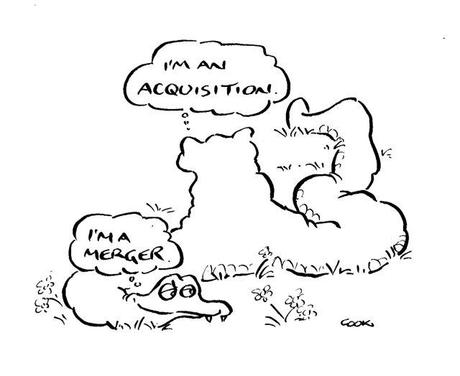 One plus one usually equals one, or less
One plus one usually equals one, or less
Of all the great strategic buzzwords, the dubious merit award goes to synergy. Often trotted out as the most remarkable logic behind some of the greatest mergers, its track record is dreadful.
Growth through acquisitions might work for some, but not for most. Even research by consulting heavyweights – that is, the people who often advise on mergers and acquisitions – show that in most cases, it doesn’t work. One study by Bain & Co found that fully two-thirds of takeovers reduced the value of the acquiring company.
There are lots of reasons. Cultural fit is one. Instead of embracing change, cultures usually clash. Technology platforms are another. They usually collide rather than collaborate. It’s often expensive. Two years after merging in 2000, Time Warner/AOL famously wrote down the value of their synergistically merged entity by $100bn.
That puts a focus on price, which is usually too high. Rupert Murdoch wrote down the Wall St Journal by $2.8bn within two years of buying if to $5.6bn. Buying ABN Amro pretty well broke the Royal Bank of Scotland overnight. RBS was a bank that had been travelling reasonably well for about 280 years.

So if you’ve got a business, how should you think about buying another one?
A few simple guidelines for getting a realistic perspective
- If you are worried about cultural fit, form an alliance first. It’s a way to find out things you won’t find out in the due diligence room – including whether your customers think it’s a great idea. You’ll also get a better view of each other’s value and whether or not you can actually work together.
- Assume your systems are not compatible. Has anyone ever known an IT project that didn’t over-promise and under-deliver? Instead of thinking about the savings from combined platforms, will work out what it will cost to integrate them.
- If you are buying business lines or sales teams, examine how much it would cost to build them yourself. The history of synergy indicates that for every $1000 you spend, you will get less back. If you are still prepared to spend that $1000, what could you build yourself?
- Ditto for buying a business to buy customers. How many do you think the acquisition will yield? How much would it cost you to buy that many customers yourself?
Whatever you do, form a “no” group

Get your “no” group to critically examine why you can’t do all that yourself for the same price. You never know, you might end up with a really sensible business plan – one that leaves your culture intact and grows your business in a way that actually gives you a return on your investment.
You may even end up with a fantastic business that someone wants to acquire for a silly price. There seem to be plenty of them about.
There's more on acquisitions and buying business lines in the book Recharge. You can buy it online here.


